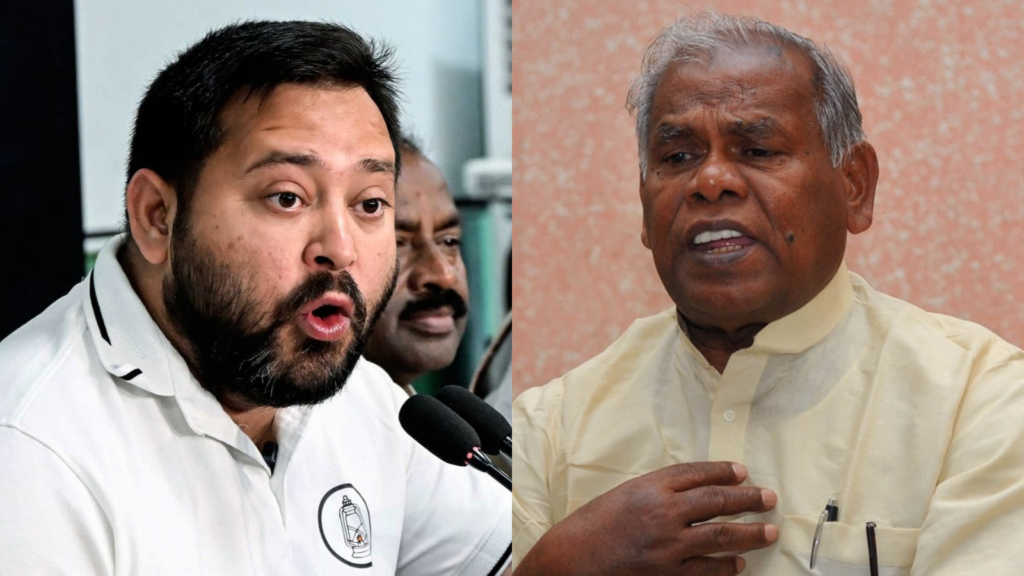While the Lalu Prasad-led Rashtriya Janata Dal (RJD) suffered a drubbing in the Bihar Assembly elections, plunging to 25 seats from 75 in 2020, the proportion of its dynast legislators has remained largely unchanged, even as the newly elected House recorded a minor decline in dynastic representation with the share of MLAs with family ties to sitting or former legislators dropping to 24.28% in 2025 from 28.81% in 2020.
In the 243-member Assembly this time, at least 59 MLAs have come from the families of sitting or former legislators, down from 70 such legislators in the outgoing House.
According to an analysis by The Indian Express, while the overall scenario shows a slight reduction in dynastic representation in the new Assembly, two parties buck the trend sharply. The percentage of dynasts among the newly elected MLAs of the RJD and Union Minister Jitan Ram Manjhi’s Hindustani Awam Morcha (Secular), an NDA ally, continue to be high, as 40% and 80% of their MLAs, respectively, belong to political families.
 Dynast MLAs in incoming and outgoing Assembly
Dynast MLAs in incoming and outgoing Assembly
In the RJD, at least 10 of its 25 new MLAs (40%) are from political dynasties — just a little lower than its 42% figure in the previous Assembly. Prominent among them are Tejashwi Yadav (son of ex-chief minister Lalu Prasad), Osama Shahab (son of former RJD strongman and MP late Mohammad Shahabuddin), and Karishma Rai (granddaughter of former CM Daroga Prasad Rai).
The HAM(S), with only five MLAs, has three from Manjhi’s extended family — his daughter-in-law Deepa Kumari, son-in-law Prafull Kumar, and sister-in-law Jyoti Devi (mother of Deepa). Another HAM(S) MLA, Romit Kumar, is the nephew of former Lok Sabha MP Arun Kumar.
The BJP, the largest party in the new Assembly with 89 seats, has kept dynastic representation relatively low. However, 21 of its 89 MLAs (23.59%) are still from the families of sitting or previous legislators, a minor increase from its percentage of dynasts in the outgoing Assembly. The notable dynasts among the new BJP legislators include shooter-turned-politician Shreyasi Singh (daughter of late Union minister Digvijay Singh), outgoing Industries Minister Nitish Mishra (son of ex-CM Jagannath Mishra), outgoing state Road Construction Minister Nitin Nabin (son of former MLA Nabin Kishore Sinha), outgoing Deputy CM Samrat Choudhary (son of former minister Shakuni Choudhary), Sanjeev Chaurasia (son of former MLC and ex-Governor Ganga Prasad Chaurasia), and Awadhesh Singh (brother-in-law of Union Home Minister Nityanand Rai).
Nitish Kumar’s Janata Dal (United), which won 85 seats, has 19 MLAs from political families. Among the JD(U)’s dynasts are Vijay Kumar Chaudhary (son of former MLA Jagdish Prasad Chaudhary); Maheshwar Hazari (sons of ex-MLA Ram Sewak Hazari); Jayant Raj (son of former MLA Janardan Manjhi); Sheela Kumari (daughter-in-law of former Speaker Dhaniklal Mandal); Sunil Kumar (son of former MLA Chandrika Ram); Chetan Anand (son of MP Lovely Anand and former MP Anand Mohan). All these dynasts were ministers in the outgoing Cabinet.
The CPI(M)’s lone MLA, Ajay Kumar from Bibhutipur, is the son of former MLA Yogendra Singh. In the outgoing House, too, Kumar was the party’s lone MLA.
Among the 59 dynast MLAs, at least 45 are second generation legislators, which means either of their parents have been MLAs, MLCs or MPs. Two are third generation legislators, including the BJP’s Devesh Kant Singh (elected from Goriakothi), who is the son and grandson of ex-MLAs Bhumendra Narayan Singh and Krishna Kant Singh; and Karishma Rai, the granddaughter of ex-CM Daroga Prasad Rai. The remaining dynasts in the new Assembly are from the same generation, including spouses or siblings of other sitting or former legislators, data shows.
In the outgoing House, dynasts accounted for more than one-fourth of its members. An investigation by The Indian Express had shown that the RJD then led with 30 dynasts out of 71 MLAs (42.25%), followed by the JD(U) with 16 out of 44 (36.36%), and the BJP with 17 out of 80 (21.25%).

